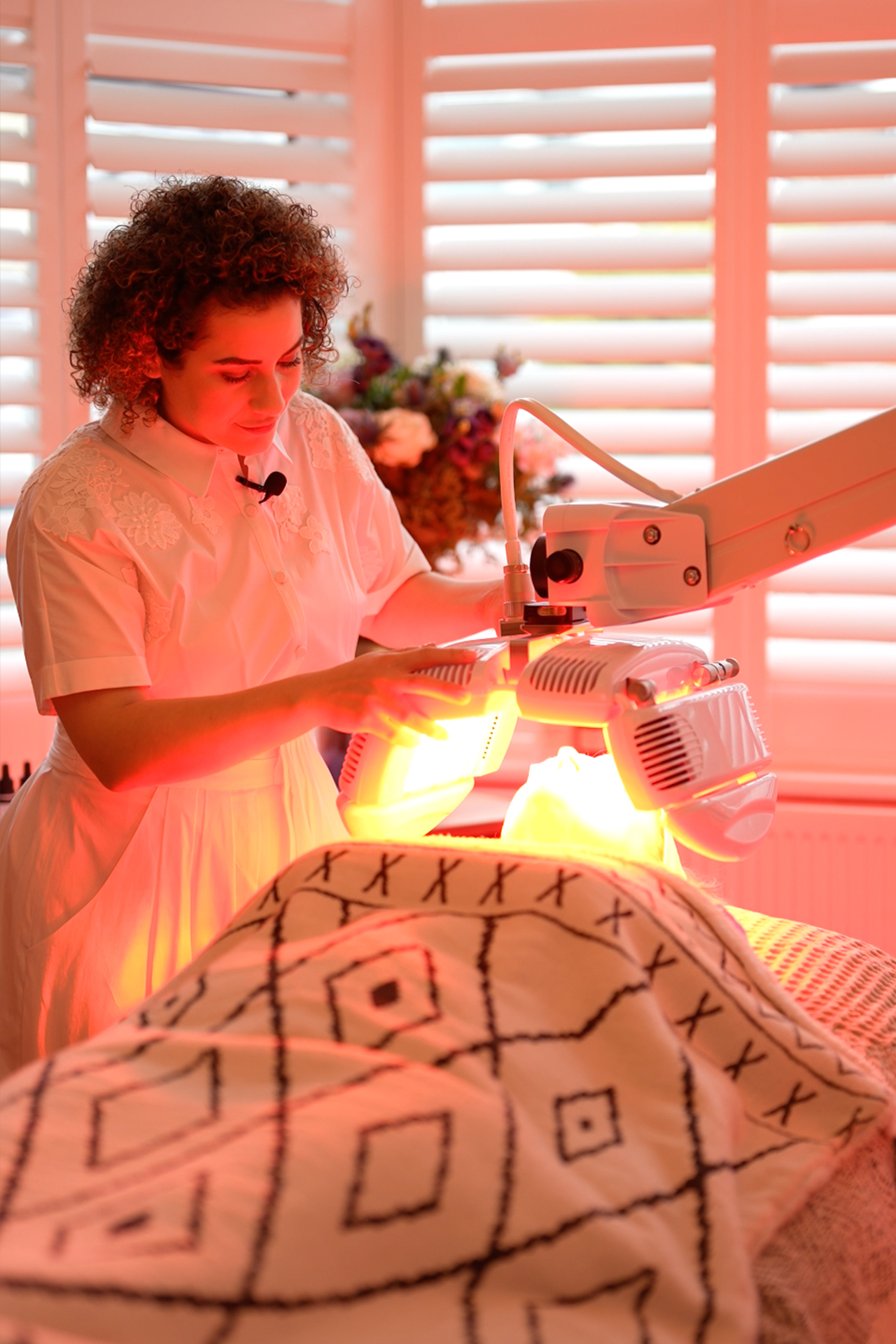
How to manage hyperpigmentation (without making it worse)
Hyperpigmentation is nothing to hide from: it’s a natural (and necessary) process that helps to keep us safe when we spend a little too much time in the sun. But with the pressure of perfection coming in strong from much of the beauty and skincare industry, I know how hard acceptance can be.
While I steer well clear of promises for perfect skin (1: there’s no such thing; 2: the pursuit of perfection is a thankless task), I’m all for boosting people’s confidence by helping them to achieve skin they’re comfortable in. So, if you’re unhappy with hyperpigmentation, there are things you can do to help manage it.
Let’s take a look at the fascinating history of hyperpigmentation through the ages, explore how we safely manage hyperpigmentation in modern times, and identify what we should avoid like the plague (hint: overly strong acids and improperly applied blue light, we’re looking at you).
The history of hyperpigmentation
- In ancient Egypt, hyperpigmentation was treated with a mix of plant-based concoctions. Cleopatra herself reportedly used milk baths to lighten her skin – leveraging the natural exfoliating properties of lactic acid.
- The Greeks and Romans used ingredients like olive oil and crushed pearls, believing in their lightening and nourishing effects – while Hippocrates, the father of modern medicine, prescribed a mixture of honey and vinegar.
- During the Middle Ages, alchemists experimented with metals like mercury, while herbalists recommended mixtures of lemon juice and almond oil for their natural bleaching properties.
- With the Renaissance came a revival of classical knowledge and the exploration of new worlds. Indigenous practices were adopted, such as the use of cocoa butter and aloe vera for their healing and lightening properties.
- In the 19th century, the burgeoning cosmetic industry began to produce creams and lotions that combined traditional ingredients with newly discovered compounds. Hydroquinone, a powerful skin-lightening agent, was first synthesised in this period.
- The discovery of retinoids and the development of chemical peels in the 20th century revolutionised hyperpigmentation treatment. Retin-A (tretinoin) emerged as a powerful tool against dark spots.
- Today, natural and organic treatments have seen a resurgence, with ingredients like turmeric, vitamin C, and liquorice root being celebrated for their lightening properties – while advanced technologies like LED treatments provide more targeted solutions.
The challenge of hyperpigmentation
Despite all of these advances, over many centuries, hyperpigmentation is still not easy to treat. And here’s why:
- Varied Causes: Because hyperpigmentation has various underlying causes (sun exposure, hormonal changes, inflammation, medications, genetic factors), different causes call for different treatment approaches.
- Depth of Pigment: The depth at which the pigment sits in the skin affects treatment efficacy. Superficial pigment (epidermal) is easier to treat than deeper pigment (dermal).
- Skin Type Differences: Everything from age to skin health will impact treatment outcomes – which is why you should always consult a specialist!
- Persistent Triggers: Even with effective treatments, failure to consistently use sunscreen and other protective measures can lead to recurrence. Certain medical conditions, such as melasma or chronic inflammatory skin diseases, can also complicate treatment.
Treating hyperpigmentation takes time, patience, and a willingness to try out different approaches to see what works for YOU. But there are some hard and fast rules when it comes to managing hyperpigmentation.
Is blue light good for hyperpigmentation?
While blue light has certain healing properties, it can actually stimulate pigment if used incorrectly, or on the wrong skin. The biggest source of blue light is the sun, and in the same way that sunlight can be beneficial when we take the proper precautions to enjoy it safely, LED light therapy can be great for our skin if it’s used in the right way
My in-clinic recommendation: Dermalux Tri-Wave MD LED Phototherapy treatment
My state-of-the-art North London clinic offers the next generation of Dermalux Tri-Wave MD LED Phototherapy treatment, using Dermalux’s revolutionary Tri-Wave MD LED technology to help reduce the appearance of hyperpigmentation.
My at-home recommendation: faceLITE LED Mask
While it won’t match the results I can achieve in-clinic with my Dermalux Tri-Wave MD LED Phototherapy treatment, the faceLITE LED mask is a brilliant way to top up while waiting for your next session.
If you’re feeling spenny: Dermalux Flex MD
If you have some cash to splash, you might want to consider investing in the Dermalux Flex MD. Again, nothing is going to come close to my in-clinic bad boy because that’s a straight up medical device, but as at-home treatments go, this is the gold standard.
Are actives good for treating hyperpigmentation?
The skincare industry embraces a whole host of acids in the treatment of hyperpigmentation, but you do need to approach them with caution if you’re not consulting a skincare specialist!
It can be tempting to throw the strongest actives at your skin when you’re unhappy with hyperpigmentation, but this is a case where slow and steady really does win the race. What you need is a progressive treatment, administered by someone who knows what they’re doing.
Acids: Why stronger isn’t always better
Our skin is a multi-sensory organ, and one that must be treated with care. When we go into the sun our skin becomes photosensitised; if you combine that with using actives that are too harsh, your skin’s natural barrier function will be impaired – leaving you with ‘baby skin’. That might sound appealing, but your skin will be dangerously sensitive to UV rays.
Using the wrong strength of active is so bad for your skin that high strength retinol will soon be banned from general sale. According to draft Regulation, these actives will be allowed for use up to a maximum concentration of 0,05% of Retinol Equivalent (RE) in body lotion and up to 0,3% RE in other cosmetics.
So, how should you tackle hyperpigmentation?
How to manage hyperpigmentation
It’s absolutely essential to use a daily broad-spectrum topical suncream if you’re looking to reduce hyperpigmentation, while also making use of wide-brimmed hats, sunglasses, umbrellas, and protective clothing. In terms of treatment, a skincare consultant will usually advise starting with a topical depigmenting agent (such as hydroquinone, tretinoin, kojic acid, azelaic acid, and L-ascorbic acid), followed by chemical peels and laser or light therapy.
As a big believer in healing skin from the inside out, I couldn’t possibly leave out the foods that can help to change your skin tone:
- Carotenoid-rich foods, such as carrots, pumpkins, sweet potatoes, and tomatoes, give a subtle, short-term tanning effect when eaten in large quantities.
- Antioxidant rich foods, such as berries, spinach, nuts, and seeds, help to protect the skin from damage.
- Omega-3 fatty acids, found in walnuts, fish, and flaxseed, contribute to a healthy glow.
- Hydrating foods, like cucumber, watermelon, and orange, improve radiance.
- Foods rich in vitamins C and E, like citrus fruits, peppers, strawberries, almonds, and spinach reduce dullness and fight off free radicals.
Once your pigmentation is under control, it’s all about maintenance. Skincare professionals (like me) often employ antioxidants like ascorbic acid to reduce the formation of the melanin pigment.
My top picks for treating hyperpigmentation
My bespoke facials are uniquely tailored to your skin’s specific stressors. I’ll build an accurate profile of your skin and recommend a tailored treatment plan that’s right for you – taking into account the root cause of your hyperpigmentation, and your own unique skin type.
Your bespoke serum will be specially formulated for your individual skin needs using Dermaviduals’ high quality active ingredients – each one hand-picked to provide targeted treatment for any problem areas.
Using my Dermalux Tri-Wave MD LED Phototherapy treatment, I can create a customised LED treatment plan designed specifically for your skin, to help reduce the appearance of hyperpigmentation.
I’ve spent years carefully curating a selection of the best retinol-infused products to rejuvenate and revitalise your skin, and to help manage the signs of hyperpigmentation. From potent serums to luxurious creams, you’ll find something to suit your skin type.
The Dermaviduals Complexion Skin Liposome is a skin-enhancing serum with anti-inflammatory properties. It helps to even skin tone while reducing the appearance of hyperpigmentation spots.
Advanced Nutrition Programme Skin Vit A+
Suitable for all skin types, this one-a-day capsule brings together the benefits of retinol (vitamin A) and vitamin D to help maintain normal skin, and to encourage cell renewal.
This incredibly restorative Vitamin Cream is the perfect answer to the drying and dulling effects of winter, which can leave us with sore, dry, and irritated skin. Enriched with vitamins A, C, E and D-panthenol, it boosts hydration and improves uneven skin tone. The cream can even be used as a mask for an added moisture surge!
Dermaviduals Grape Seed Extract
This powerful antioxidant with liposomal formulation encourages cell synergy. Its specialist formula also protects the skin on a micro-scale by slowing down the cells’ ageing process for a healthier complexion.
To tackle pigmentation at its source, you need to be applying decent sun protection! My carefully curated range of suncare essentials combine cutting-edge technology with nature’s finest ingredients to provide you with a luxurious and comprehensive solution for your sun protection needs.
Bionutri Fish Oil – DHA 5:1 EPA
Bionutri fish oil supplements contain Omega 3 fatty acids (DHA and EPA) that help to support the body’s natural functions. Each capsule also contains Vitamin D to encourage the skin’s growth and repair processes. Essential Fatty Acids (EFAs) are crucial for the health of dendritic cells – and because they’re not metabolised by the body, we need to consume them via diet, supplements, or topical application.
The future of skin protection
As well as using acids and LED to fight pigmentation, we might soon be investing in UV-protective clothing!
Biodesigner Maca Barrera is pushing the boundaries of UV protection with the pioneering project Melwear: ‘second skin’ clothing that’s embedded with microbial properties to help our bodies adapt to climate change. You can learn about this fascinating project here!
But a word to the wise: if anyone ever promises to get rid of your hyperpigmentation completely, and for good, it’s time to call bullsh*t! Pigmentation is a natural process, and one that helps to protect our skin from harmful UV rays. This means that whatever treatments you employ to manage hyperpigmentation, the process will restart once you’re back in the sun.
What we all need is an element of acceptance when it comes to the pigmentation of our skin. We can manage it, treat it, and take care to enjoy the sun safely, but we can’t eradicate pigmentation for good (and we wouldn’t want to if we could).
Read more about embracing hyperpigmentation.








